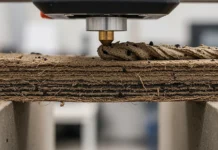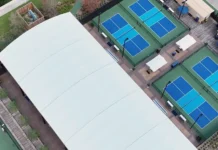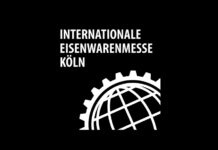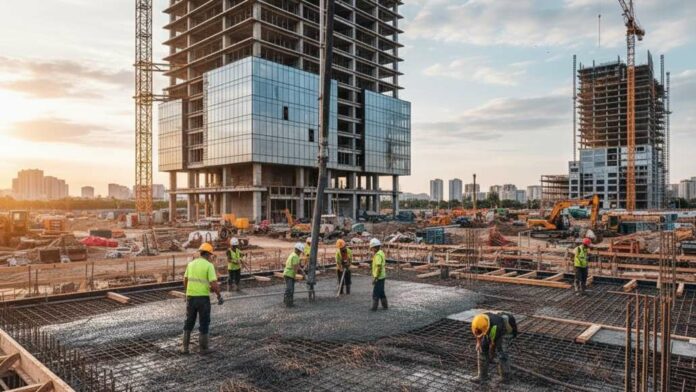Hybrid Cement Composites Reinventing Structural Strength
The construction industry continuously seeks materials that deliver superior structural performance while meeting increasingly demanding environmental and economic requirements. Hybrid cement composites represent a paradigmatic advancement in construction materials science, combining the proven durability of traditional cement with innovative supplementary materials to create composite systems that exceed the performance capabilities of their individual components. These advanced materials demonstrate how strategic material combination can achieve structural characteristics that were previously unattainable through conventional approaches.
Traditional concrete systems, while foundational to modern construction, face inherent limitations in tensile strength, durability under aggressive environments, and long-term performance under dynamic loading conditions. Hybrid cement composites address these limitations by incorporating multiple material phases that contribute distinct performance characteristics, creating synergistic effects that optimize overall structural behavior while maintaining constructability and economic viability.
The development of hybrid cement composites draws upon materials science principles, fiber reinforcement technologies, and chemical admixture innovations to create tailored solutions for specific construction applications. These systems enable engineers to design structures with enhanced performance characteristics while often reducing material quantities and construction complexity compared to traditional alternatives.
Advanced Cement Composites Engineering
Modern cement composites engineering leverages sophisticated understanding of material interactions at molecular, microscopic, and macroscopic levels to optimize performance characteristics. The strategic combination of different cement types, supplementary cementitious materials, and chemical admixtures creates complex binding matrices that exhibit enhanced properties compared to single-component systems.
Portland cement blended with supplementary materials such as silica fume, fly ash, and ground granulated blast furnace slag creates dense, low-permeability matrices that resist chemical attack while developing superior strength characteristics. These blended systems often demonstrate improved workability during construction while achieving enhanced durability performance throughout service life.
Alkali-activated cement systems represent revolutionary approaches to binding material development, utilizing industrial byproducts and alternative alkaline activators to create high-performance matrices. These systems can achieve rapid strength development, exceptional chemical resistance, and reduced environmental impact compared to traditional Portland cement systems.
Geopolymer cement composites offer unique advantages in high-temperature applications and aggressive chemical environments. These materials form three-dimensional aluminosilicate networks that maintain structural integrity under conditions that would severely degrade traditional cement systems, expanding application possibilities for extreme environment construction.
Structural Materials Innovation Through Fiber Integration
Fiber reinforcement transforms brittle cement matrices into ductile composite systems capable of withstanding complex stress states and dynamic loading conditions. The strategic selection and distribution of reinforcing fibers creates materials that exhibit enhanced toughness, impact resistance, and crack control capabilities while maintaining the compression strength characteristics that make concrete valuable for structural applications.
Steel fiber reinforcement provides exceptional tensile strength and ductility improvements while maintaining compatibility with conventional construction methods. High-strength steel fibers can replace traditional reinforcing bars in certain applications, simplifying construction processes while delivering equivalent or superior structural performance. Advanced steel fiber geometries, including hooked-end, crimped, and twisted configurations, optimize bond characteristics and load transfer mechanisms.
Synthetic polymer fibers offer advantages in weight reduction, corrosion resistance, and chemical compatibility with aggressive environments. Polypropylene, polyethylene, and polyvinyl alcohol fibers can significantly improve concrete toughness and crack resistance while contributing minimal weight increases to structural systems.
Carbon fiber reinforcement provides exceptional strength-to-weight ratios and electromagnetic transparency that make hybrid cement composites suitable for specialized applications including aerospace, marine, and electronic infrastructure construction. Carbon fiber integration creates composites with tailored directional properties that can be optimized for specific loading conditions.
Natural fiber reinforcement from renewable sources offers sustainable alternatives that can deliver performance improvements while reducing environmental impact. Hemp, flax, and sisal fibers can enhance concrete toughness and crack resistance while contributing to sustainability objectives and reducing dependence on synthetic materials.
High Strength Construction Material Development
The pursuit of higher strength construction materials drives continuous innovation in hybrid cement composite formulation and processing techniques. Ultra-high-performance concrete systems achieve compressive strengths exceeding conventional concrete by factors of three to five while demonstrating exceptional durability characteristics and reduced permeability.
Reactive powder concrete represents the culmination of materials optimization, incorporating fine powders, high-efficiency water reducers, and optimized particle packing to create extremely dense, high-strength matrices. These materials often incorporate steel fibers to provide tensile capacity and ductility that complement their exceptional compressive strength characteristics.
Self-compacting high-strength concrete combines the performance benefits of strength optimization with enhanced constructability through rheological modification. These materials can achieve superior strength characteristics while filling complex formwork geometries without mechanical vibration, reducing construction labor requirements and improving quality consistency.
Heat treatment and pressure application during curing can further enhance the strength development of hybrid cement composites. Autoclaved curing processes accelerate chemical reactions while creating more stable hydration products that contribute to long-term strength and durability performance.
Fiber Reinforced Cement System Optimization
The optimization of fiber reinforced cement systems requires careful consideration of fiber type, geometry, content, and distribution to achieve targeted performance characteristics while maintaining constructability and cost-effectiveness. Advanced mixing techniques ensure uniform fiber distribution while preventing fiber balling and segregation that can compromise composite performance.
Hybrid fiber reinforcement strategies combine multiple fiber types to optimize different performance aspects simultaneously. Steel fibers can provide primary tensile reinforcement while synthetic fibers control early-age cracking and enhance impact resistance, creating systems that outperform single-fiber alternatives.
Fiber length optimization balances reinforcement effectiveness with mixing and placement considerations. Shorter fibers distribute more easily and provide better crack control, while longer fibers offer greater tensile reinforcement and energy absorption capacity. Multi-modal fiber distributions can capture advantages of different fiber lengths within single composite systems.
Surface treatment technologies enhance fiber-matrix bond characteristics, improving load transfer efficiency and composite performance. Coating technologies, chemical treatments, and mechanical modifications can optimize fiber performance for specific applications while addressing durability concerns in aggressive environments.
Performance Validation and Quality Assurance
Comprehensive performance validation ensures that hybrid cement composites meet design requirements while providing predictable long-term behavior under service conditions. Advanced testing protocols evaluate multiple performance characteristics including strength, durability, toughness, and fatigue resistance to provide comprehensive material characterization.
Accelerated testing methods simulate long-term environmental exposure in compressed timeframes, enabling assessment of durability performance that would otherwise require decades of exposure. Freeze-thaw cycling, chemical exposure, and thermal cycling tests provide insights into long-term performance characteristics that guide material optimization and application guidelines.
Non-destructive evaluation techniques enable quality assessment of composite materials without compromising structural integrity. Ultrasonic testing, electromagnetic methods, and optical techniques can detect fiber distribution uniformity, void content, and bond quality in finished structures.
Statistical quality control approaches ensure consistent composite performance across production batches while identifying opportunities for process improvement. Advanced statistical methods can correlate raw material properties, mixing parameters, and environmental conditions with final composite performance, enabling optimization of production processes.
Construction Implementation and Field Applications
Successful implementation of hybrid cement composites in construction applications requires adaptation of conventional construction procedures to accommodate the unique characteristics of these advanced materials. Modified mixing procedures, specialized placement techniques, and adjusted curing protocols ensure optimal composite performance while maintaining construction productivity.
Mixing sequence optimization prevents fiber damage and ensures uniform distribution throughout composite matrices. Sequential addition of materials, modified mixing times, and specialized mixing equipment can optimize composite characteristics while minimizing mixing energy requirements and equipment wear.
Placement techniques must accommodate altered rheological properties and fiber content that can affect pumpability, formwork filling, and surface finishing. Specialized placement equipment and modified procedures ensure proper consolidation while preventing fiber segregation and surface defects.
Field quality control procedures verify composite performance characteristics during construction while providing feedback for process optimization. Rapid testing methods enable real-time quality assessment while comprehensive testing validates long-term performance predictions.
Economic and Environmental Considerations
The economic viability of hybrid cement composites depends on comprehensive lifecycle analysis that considers initial material costs, construction efficiency, and long-term performance benefits. While material costs may exceed conventional concrete, improved performance characteristics often provide economic advantages through reduced maintenance requirements, extended service life, and enhanced structural capacity.
Environmental assessment of hybrid cement composites must consider the environmental impact of all constituent materials while evaluating lifecycle benefits from improved durability and reduced material quantities. Utilization of industrial byproducts and waste materials can provide environmental benefits that offset the impact of specialized additives and processing requirements.
Market adoption of hybrid cement composites accelerates as successful applications demonstrate performance advantages and economic benefits. Standardization efforts and code development provide design guidance while building confidence in these advanced materials among construction professionals.
Conclusion
Hybrid cement composites represent a fundamental advancement in construction materials that enables unprecedented combinations of strength, durability, and performance characteristics. Through strategic combination of cement types, supplementary materials, and fiber reinforcement, these composites transcend the limitations of traditional concrete while maintaining the constructability and economic advantages that make concrete the world’s most widely used construction material.
The successful implementation of hybrid cement composites requires integration of materials science, structural engineering, and construction expertise supported by comprehensive testing and quality assurance programs. As these materials become more widely adopted, their potential to transform construction practices and enable new structural possibilities becomes increasingly evident.
The continued evolution of hybrid cement composites promises even greater performance capabilities as new materials, processing techniques, and application strategies are developed. These advanced materials will play increasingly important roles in meeting the performance demands of future construction projects while contributing to sustainability objectives and infrastructure resilience goals.































